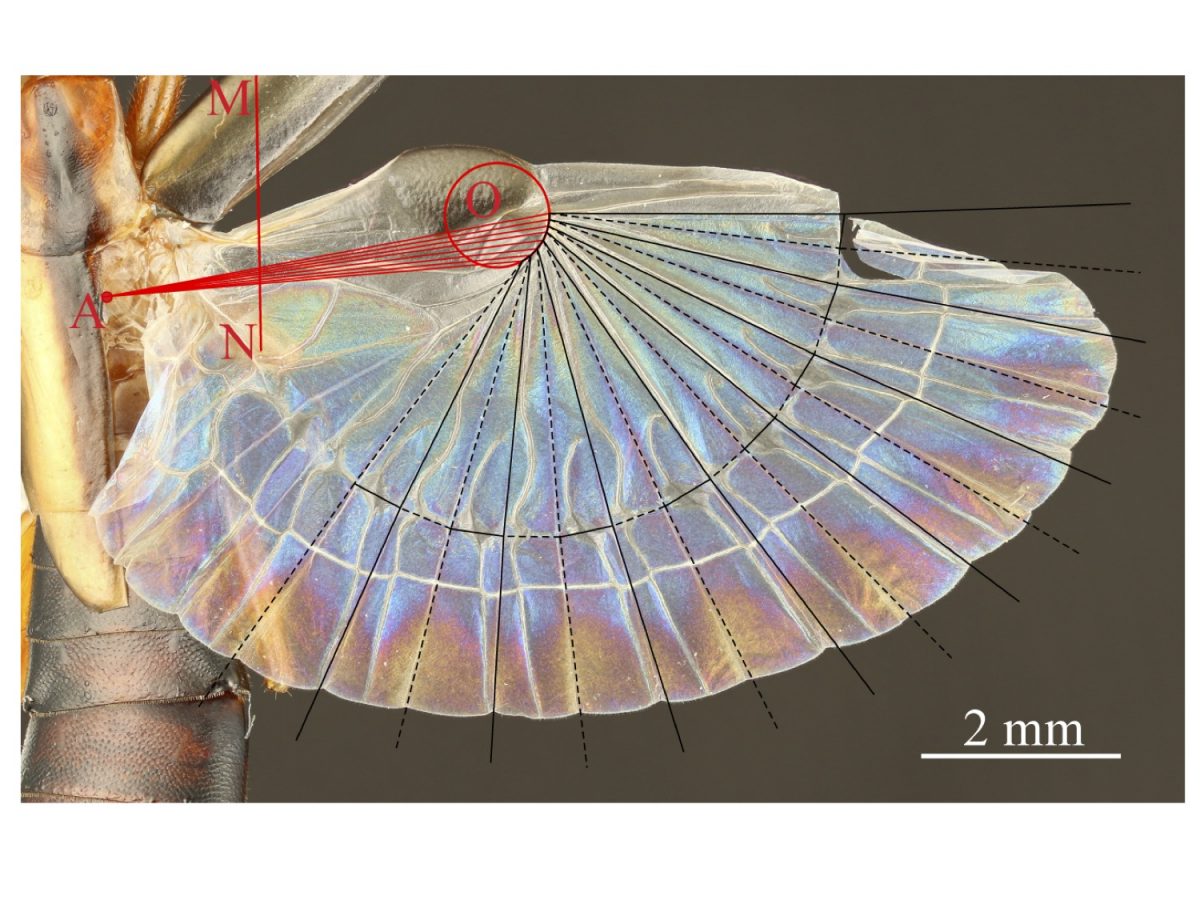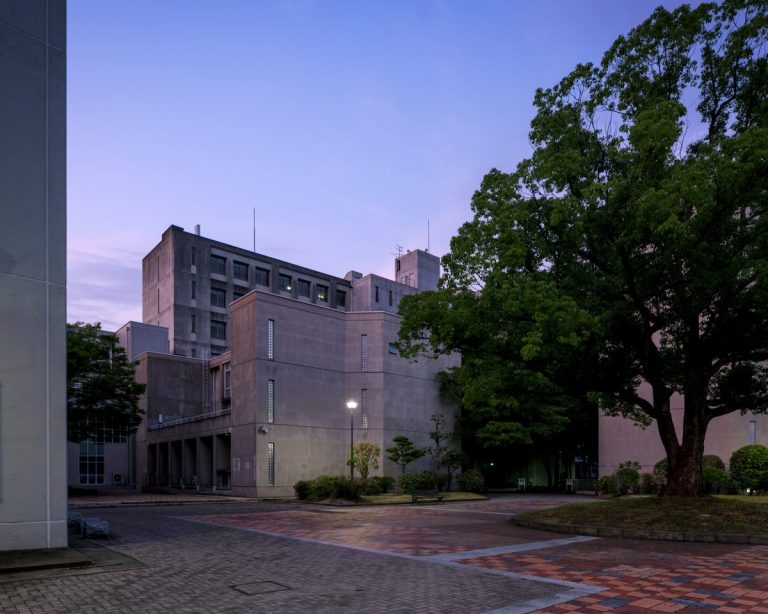The technology used to fold large structures into compact shapes are needed in a variety of products from daily use articles like umbrellas and folding fans to solar cell panels on satellites. The difficulties for designing of these deployable structures are summarized in how to achieve compatibility between the deformability (instability) required for folding and the strength properties (stability). These two properties generally demonstrate a trade-off relationship, and thus, are difficult to combine.
Foldable wings in insects are the ultimate deployable structures. They have sufficient strength and stiffness to tolerate 20–1000 beats per second in the flight position, although they can be folded and unfolded nearly instantly, depending on the situation. Therefore, they have the potential to inspire innovative designs for deployable structures. There is a wide variety of ways that insects store their wings, but the most compact and complex folding patterns can be found in the hind wings of earwigs. The special folding process reduces surface area 10 to 15 times, depending on the species. Their hind wings are supported by a radial fan-like frame, but unlike the folding fans and grasshopper wings. They have special hinges in the center of their frame, making it possible to fold closed fan once more from the middle. In addition to the extreme compactness, many interesting engineering properties have been reported, such as in-flight reinforcement and snap-through stabilizing mechanisms to keep unfolded shape during flight. However, despite the high engineering potential, there have been few attempts to apply the earwig fan structure to artificial deployable structures. The German entomologist, Fabian Haas revealed the crease pattern of the hind wings, but its design process had not been resolved, which limits practical applications.
Dr Kazuya Saito from Kyushu University’s Faculty of Design and his research team revealed that the complex folding pattern of these earwig fans can be reconstructed by very simple geometric rules. The results were published in Proceedings of the National Academy of Sciences of the United States of America (PNAS)(Paper link).
Dr Saito and his research collaborators used the X-ray micro-CT scanner to analyze how the main frames are arranged in the closed wings of earwigs, and proposed a drawing method that satisfies all the conditions for the flat foldability by applying origami geometry.
The method is shown in the figure to the right. The lines, points, and circles in red, show the starting geometry elements. You can use the rules shown here to draw complex crease pattern of the earwig fan. The detailed design process via classic drawing techniques with a ruler and compass is shown in Movie S2 and S3 in the paper. Dr Saito has also developed and released software that can automatize the process depending on the application requirements.
The fold lines designed by this method are highly similar to those seen in real earwig wings. One other achievement of this research is the fact that it revealed the geometric rules hidden in the evolution of these wings. This allows us to estimate the evolutionary path taken to develop these complex folding structures. It is incredibly difficult to determine the folding patterns of fossilized insects. However, if they use the same principles, it becomes possible to reconstruct the crease patterns from the frames of their wings (veins). Dr Saito and Dr Ricardo Pérez-de la Fuente from Oxford University Natural History Museum investigated the fossil records. They revealed that the crease pattern of an ancient earwig relative, the 280-million-year-old Protelytropteran insect can be drawn using the same geometric rules from points, lines, and circles as is the case with modern earwigs. This allowed the researchers to project extinct, hypothetical intermediate forms between the two groups, shedding light on possible evolutionary pathways that could have led to the sophisticated wings of modern earwigs.
The fact that the wing folds of these two species can be reconstructed using the same geometric rules clearly shows the excellence of this design principle, so much so that they have remained over 280 million years. This research represents the first step towards using this unique natural shape in artificial deployable structures of various sizes and materials, with potential ground-breaking implications in architecture, aerospace, mechanical engineering, and daily uses. The usage of the geometry of traditional Japanese origami to uncover the mysteries of the evolution of insect wings is a unique achievement as well.
The crease pattern of the earwig fan made using these achievements are here. Please give it a try. We have also published paper crafts of protelytropteran and earwig with realistic foldable wings. You can make origami for as well.
-
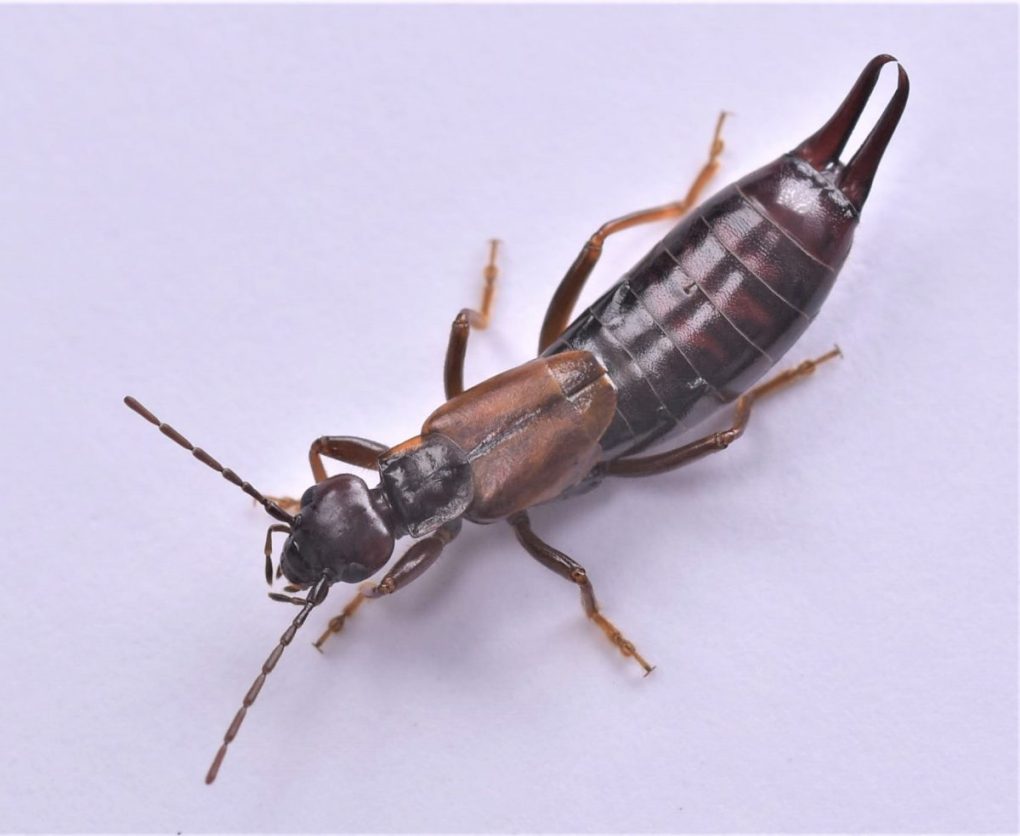 Forficula mikado Many species of earwig have degenerated wings, but long-winged earwigs, which have the ability to fly, have backs with sheaths and folded hind wings. The sheaths are square, with their folded hind wing tips protruding out.
閉じる
Forficula mikado Many species of earwig have degenerated wings, but long-winged earwigs, which have the ability to fly, have backs with sheaths and folded hind wings. The sheaths are square, with their folded hind wing tips protruding out.
閉じる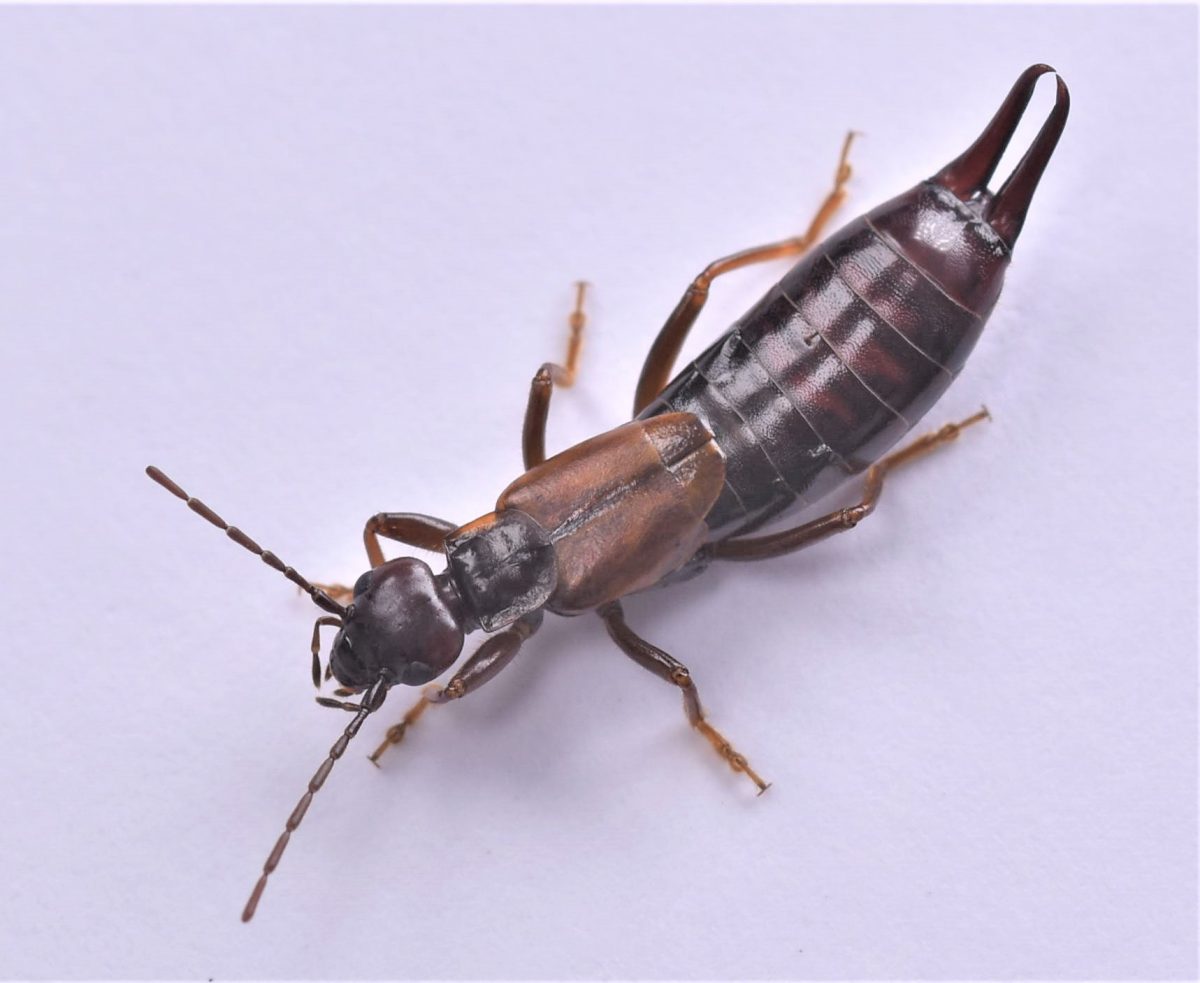
Forficula mikado Many species of earwig have degenerated wings, but long-winged earwigs, which have the ability to fly, have backs with sheaths and folded hind wings. The sheaths are square, with their folded hind wing tips protruding out. -
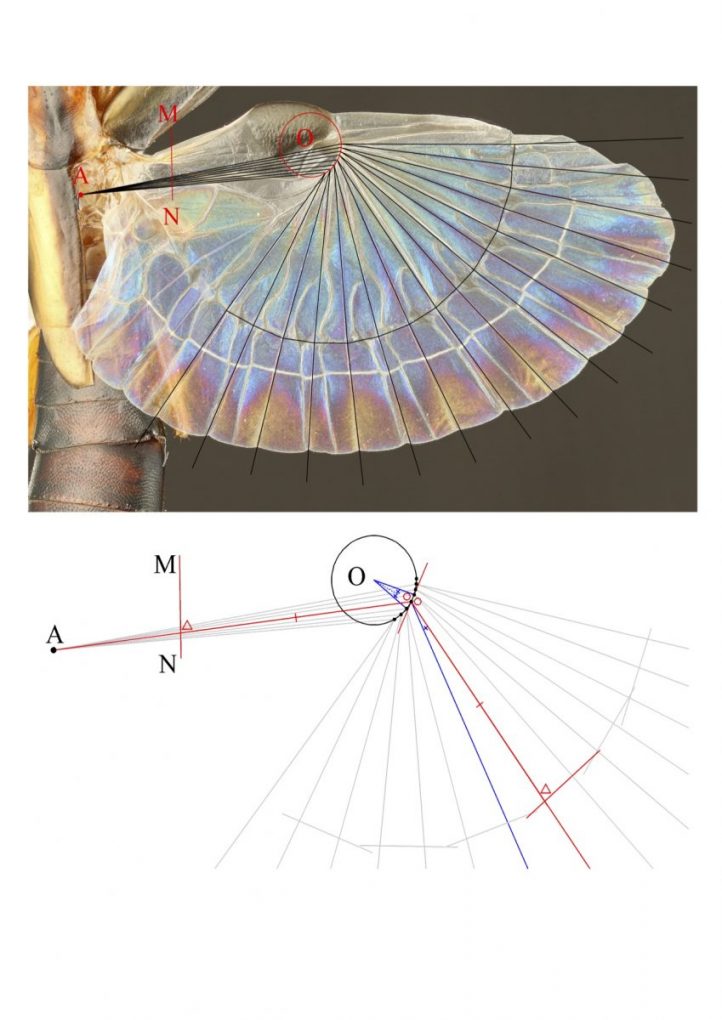 Schematic for the new design method of the earwig-inspired fan, above shown projected onto the hind wing of an earwig (Proreus simulans). Credit: Kazuya Saito.
閉じる
Schematic for the new design method of the earwig-inspired fan, above shown projected onto the hind wing of an earwig (Proreus simulans). Credit: Kazuya Saito.
閉じる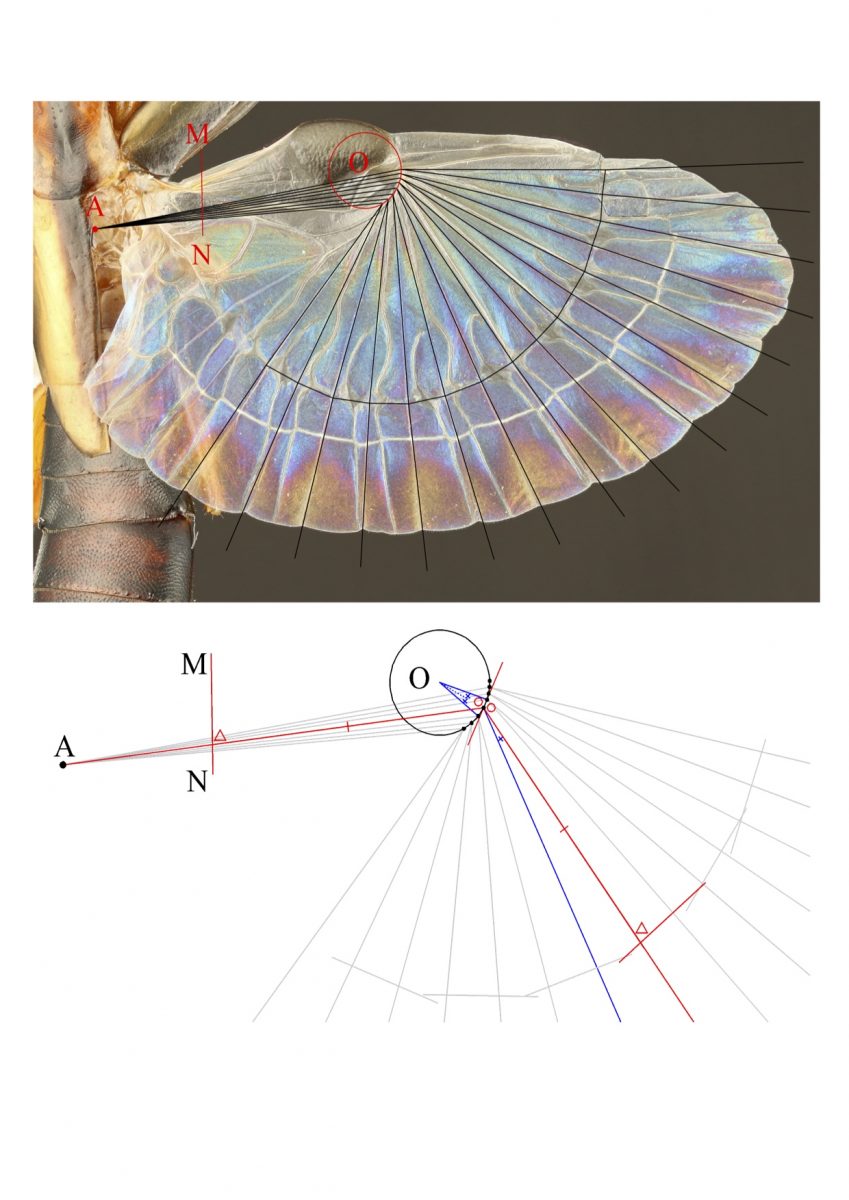
Schematic for the new design method of the earwig-inspired fan, above shown projected onto the hind wing of an earwig (Proreus simulans). Credit: Kazuya Saito. -
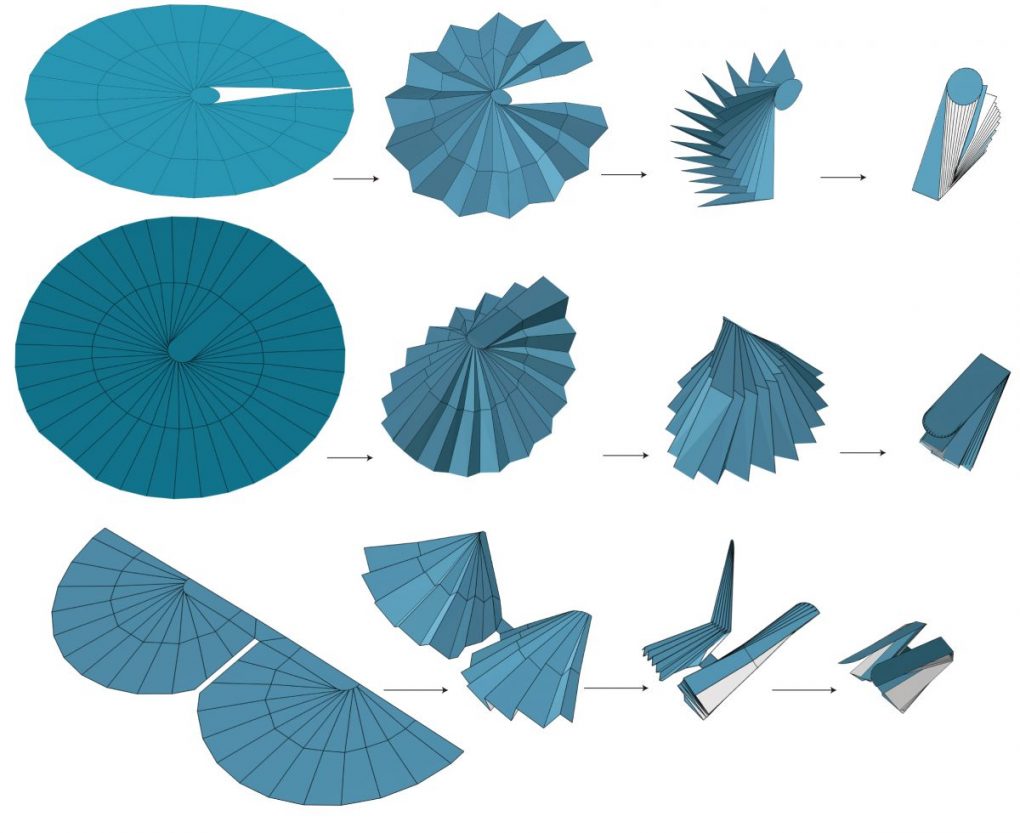 Examples of customized earwig-inspired fans made using the new design software. Above: two models of earwig fans for use in deployable structures such as antenna reflectors or umbrellas. Below: deployable wings for a micro air vehicle. Note the high compactness of the fans when fully folded. Credit: Kazuya Saito.
閉じる
Examples of customized earwig-inspired fans made using the new design software. Above: two models of earwig fans for use in deployable structures such as antenna reflectors or umbrellas. Below: deployable wings for a micro air vehicle. Note the high compactness of the fans when fully folded. Credit: Kazuya Saito.
閉じる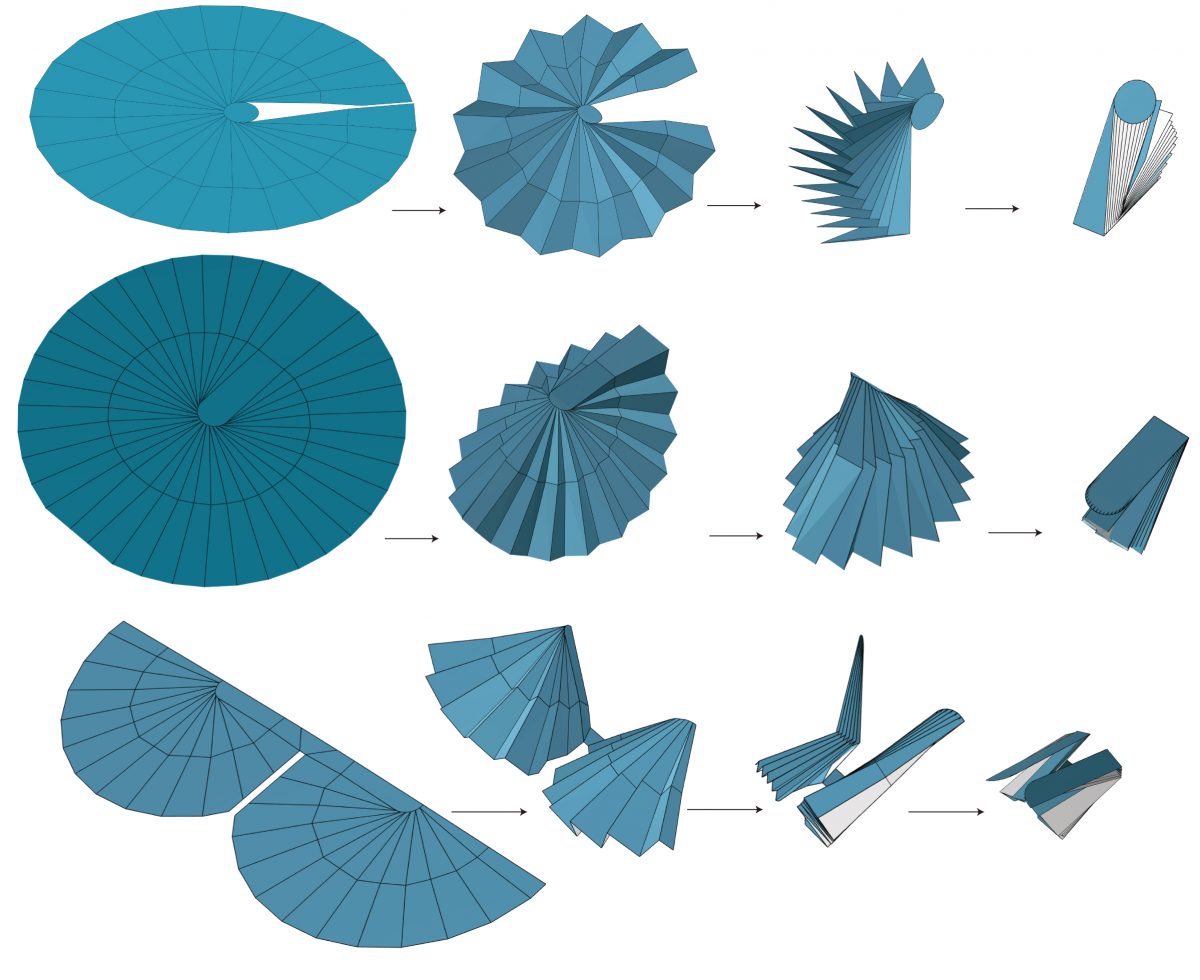
Examples of customized earwig-inspired fans made using the new design software. Above: two models of earwig fans for use in deployable structures such as antenna reflectors or umbrellas. Below: deployable wings for a micro air vehicle. Note the high compactness of the fans when fully folded. Credit: Kazuya Saito.
![九州大学イノベーションデザインネクスト[KID NEXT]](https://www.kidnext.design.kyushu-u.ac.jp/wp-content/themes/kidnext/img/logo_header.png)
